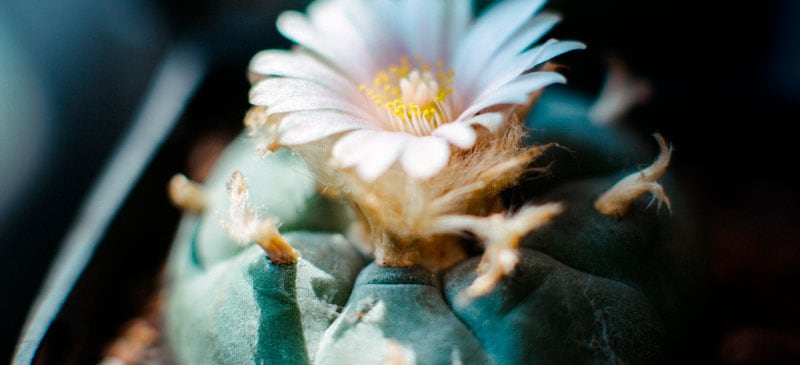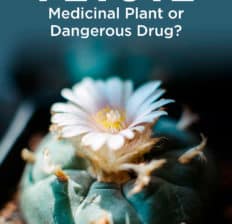This Dr. Axe content is medically reviewed or fact checked to ensure factually accurate information.
With strict editorial sourcing guidelines, we only link to academic research institutions, reputable media sites and, when research is available, medically peer-reviewed studies. Note that the numbers in parentheses (1, 2, etc.) are clickable links to these studies.
The information in our articles is NOT intended to replace a one-on-one relationship with a qualified health care professional and is not intended as medical advice.
This article is based on scientific evidence, written by experts and fact checked by our trained editorial staff. Note that the numbers in parentheses (1, 2, etc.) are clickable links to medically peer-reviewed studies.
Our team includes licensed nutritionists and dietitians, certified health education specialists, as well as certified strength and conditioning specialists, personal trainers and corrective exercise specialists. Our team aims to be not only thorough with its research, but also objective and unbiased.
The information in our articles is NOT intended to replace a one-on-one relationship with a qualified health care professional and is not intended as medical advice.
Peyote: Medicinal Plant or Dangerous Hallucinogenic Drug?
November 28, 2022

Have you ever heard of peyote? It’s actually one of the oldest psychedelic agents on Earth. Ancient civilizations like the Aztecs were some of the first people to use the peyote cactus as a divine substance, and some Native Americans still use it today.
So is peyote legal? In the U.S., it is completely illegal to possess or use peyote.
However, according to a 1994 update of the the American Indian Religious Freedom Act (1978), the Native American Church can legally use and transport it for ceremonial purposes in connection with the practice of traditional Indian religion. For the Native American Church, also called Peyotism or Peyote Religion, it is a central part of traditional religious rituals still practiced to this day.
In addition to its use by Native American, it is also generally well-known for its hallucinogenic effects, somewhat similar to LSD and psilocybin mushrooms, which is why some people use it as a recreational drug, and in recent years, it’s been under research for potential cognitive and mental health applications.
Are there any actual health benefits to the peyote drug? It’s historically been used for the treatment of some common health concerns, like fevers and wounds, but it’s recommended to avoid peyote entirely because:
- It is illegal.
- It has a laundry list of potential negative side effects that can be severe.
What Is Peyote?
Peyote (Lophophora williamsii) is a type of hallucinogenic cactus that belongs to the Cactaceae family. Also called mescal button, it only grows naturally in the limestone-rich soils of the Chihuahuan Desert of southern Texas and northern Mexico.
A peyote cactus has a color somewhere between blue-green to gray-green with pink to white flowers in summer and fruit that ripens a year later. It’s typically only about two inches tall and three inches wide across. The name comes from the Aztec word “peyotl” for a cactus.
The crown of the cactus has disc-shaped buttons. These peyote buttons contain psychedelic alkaloids — primarily mescaline, which is an alkaloid drug that has hallucinogenic effects on humans.
People slice these buttons off of the cactus and dry them so they can be chewed or used to make a psychoactive tea. Peyote can also be smoked by rolling it in tobacco or a marijuana leaf.
Slang terms for it include:
- bad seed
- britton
- hikori
- hikuli
- half moon
- hyatari
- P
- nubs
Slang terms for mescaline include:
- cactus buttons
- cactus joint
- mesc
- mescal
- mese
- mezc
- moon
- musk
- topi
There’s also something called false peyote (Lophophora diffusa). Unlike peyote (Lophophora williamsii), the false namesake does not contain mescaline yet it is sometimes consumed as a hallucinogen. It looks different from regular peyote with a yellow-green body and white to yellow flowers.
In the U.S., peyote and mescaline are listed as Schedule I hallucinogens under the Controlled Substances Act. It is possible to find peyote seeds online, but typically a reputable company will not send the seeds to someone who resides in a region of the world where the cultivation is outlawed.
The limited growing area of the peyote cactus is said to limit its sale as a drug, but other illegal drugs, such as LSD or PCP, are sometimes sold as mescaline.
Effects/Uses/Benefits
Some people are said to use peyote for health concerns like fevers, joint pain, paralysis, fractures, wounds and snake bites. However, for all of these health concerns, there are much safer natural remedies that can be employed so it’s not recommended to use peyote medicinally for any these concerns.
There are also no solid scientific studies to back up any of these uses to date. However, its pharmacokinetic and pharmacodynamic aspects are currently being studied for potential cognitive, mental health and addiction applications.
Religious Ceremonies
As mentioned earlier, peyote is used to this day in the Native American Church. The ritualistic use is typically an all-night ceremony that occurs in a tepee around a fire and is led by a peyote “chief.”
When eaten as part of a traditional ceremonial practice, peyote is believed to allow the user to “commune with God and the spirits (including those of the departed) in contemplation and vision and so to receive from them spiritual power, guidance, reproof, and healing.”
In addition to sacramental consumption of peyote, there is also singing, prayer and contemplation. Songs and chants used during the ceremonies can differ depending on the tribe.
Members of the Native American Church do not consider their use of peyote recreational. They believe it should be used for religious/spiritual purposes.
Hallucinogenic Drug
One of the other most common uses of peyote is as a mind-altering hallucinogenic substance. This personal recreational use takes place in the U.S. even though using peyote outside of religious ceremonies is prohibited by federal law.
Peyote is sometimes intentionally (and illegally) taken, like LSD and other psychedelic drugs, to produce a temporarily altered state of existence. The effects of ingesting peyote are both physical and psychological, and users often describe their experience as either a good or bad “trip.”
The effects of peyote or a peyote trip can start within 20 to 90 minutes after ingestion and can last up to 12 hours, depending on how much is taken by the user. In general, a peyote trip is an extremely unpredictable and potentially dangerous experience.
Potential Addiction Treatment
John H. Halpern, M.D., Assistant Professor of Psychiatry, Harvard Medical School, has been visiting the Navajo Nation for several years to study the effects of peyote. While he admits that psychedelics like mescaline are toxic substances, he also believes that the “mind-revealing power” of psychedelics could be used to help people suffering from alcoholism and addiction — and offer a natural alternative to chemical treatments.
“There are medicines here,” he says, that could prove to be “fundamentally valuable.”
Dr. Halpern’s opinion of peyote’s helpful potential for alcoholics and drug addicts is said to be based upon both his own personal observations of the Native American Church and the research of others.
An article published in 2015 in the American Journal of Psychiatry titled “Peyote in the Treatment of Alcoholism Among American Indians” took a look at the use of peyote in treatment programs for American Indians struggling with alcoholism. These treatment programs include occupational and cultural therapy, which include peyote meetings conducted by the Native American Church.
According to the article, “During these meetings, participants often ingest peyote (mescaline), which, like LSD, facilitates cathartic expression and enhances suggestibility. Although the authors do not propose that the peyote meeting is a cure for alcoholism, they feel it offers some specific advantages in the treatment of the unique problems of the Indian alcoholic.”
Related: Salvia — Dangerous Hallucinogen or Beneficial Herb?
Risks and Side Effects
Without a doubt, peyote is generally considered unsafe for use. This mescaline drug can cause homicidal, psychotic or suicidal behavior due to its hallucinogenic effects. It can also cause birth defects and should never be used by pregnant or nursing women.
Using it prior to surgery can be very dangerous since it can raise heart rate and blood pressure. Stimulant drugs are also known to interact dangerously with it as well.
Possible physical side effects of peyote are known to include:
- Numbness
- Tension
- Anxiety
- Rapid reflexes
- Muscle twitches and weakness
- Impaired motor coordination
- Dizziness
- Trembling
- Dilation of the pupils
- Increased blood pressure and heart rate
- Intense nausea and vomiting
- Appetite suppression
- Elevated body temperature and sweating
- Chills and shivering
Potential psychological side effects of peyote include:
- Vivid mental images and distorted vision
- Synesthesia (the perception of seeing music or hearing colors)
- Altered perception of time and space
- Joy, exhilaration, panic, extreme anxiety or terror
- Distorted sense of body (users can feel either weighed down or weightless)
- Heightened sensory experiences (i.e., brighter colors, sharper visual definition, increased hearing acuity, more distinguished taste)
- Difficult focusing, maintaining attention, concentrating and thinking
- Loss of sense of reality; melding past experiences with present
- Preoccupation with trivial thoughts, experiences or objects
- Highly adverse reactions (“bad trip”), including frightening hallucinations, confusion, disorientation, paranoia, agitation, depression, panic and/or terror
- A documented long-term effect of a peyote trip is a possible prolonged psychotic state similar to that of paranoid schizophrenia, which may only affect those who were previously diagnosed as mentally ill.
Peyote emetic (vomit-inducing effects) are known to be very strong, and at least one death of a Native American with a history of alcohol abuse has been attributed to esophageal bleeding caused by vomiting after peyote ingestion.
Related: 12 Dangers of Psychoactive Drugs (They’re Significant)
Final Thoughts
- What is peyote? Lophophora williamsii is a type of hallucinogenic cactus that belongs to the Cactaceae family.
- Peyote buttons contain psychoactive alkaloids, especially mescaline. These buttons can be sliced off from the plant and chewed or used to make a psychoactive tea. Peyote can also be smoked.
- This plant is illegal in the U.S. However, the Native American Church can legally use and transport it for ceremonial purposes in connection with the practice of traditional religious beliefs.
- Some researchers believe that peyote and other psychedelic drugs have the potential to be used in the treatment of alcohol and addiction, but there are clear risks involved.
- The possible psychical and psychological side effects of ingesting peyote are extremely dangerous and even potentially fatal.













